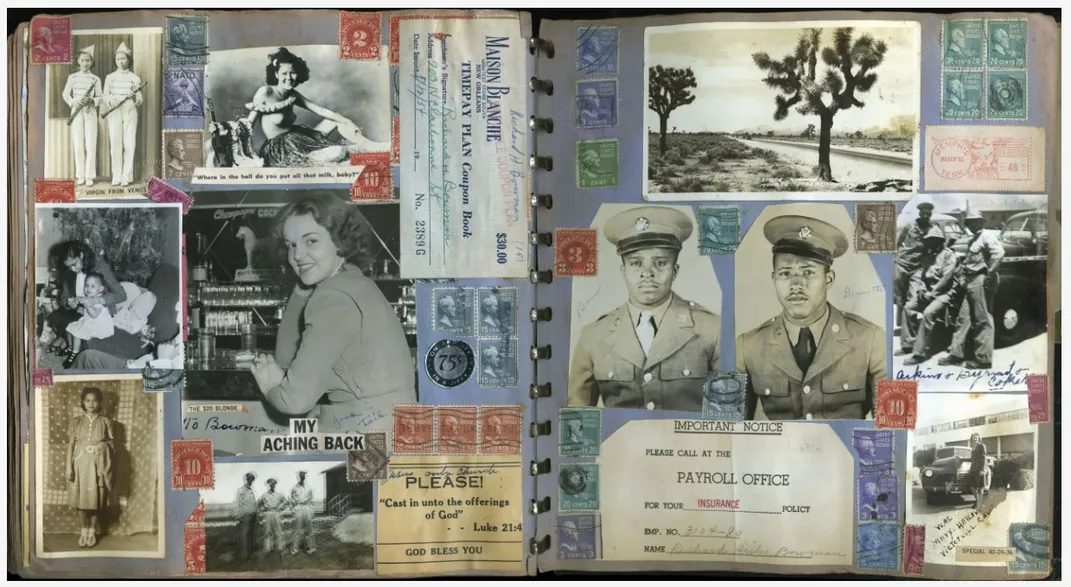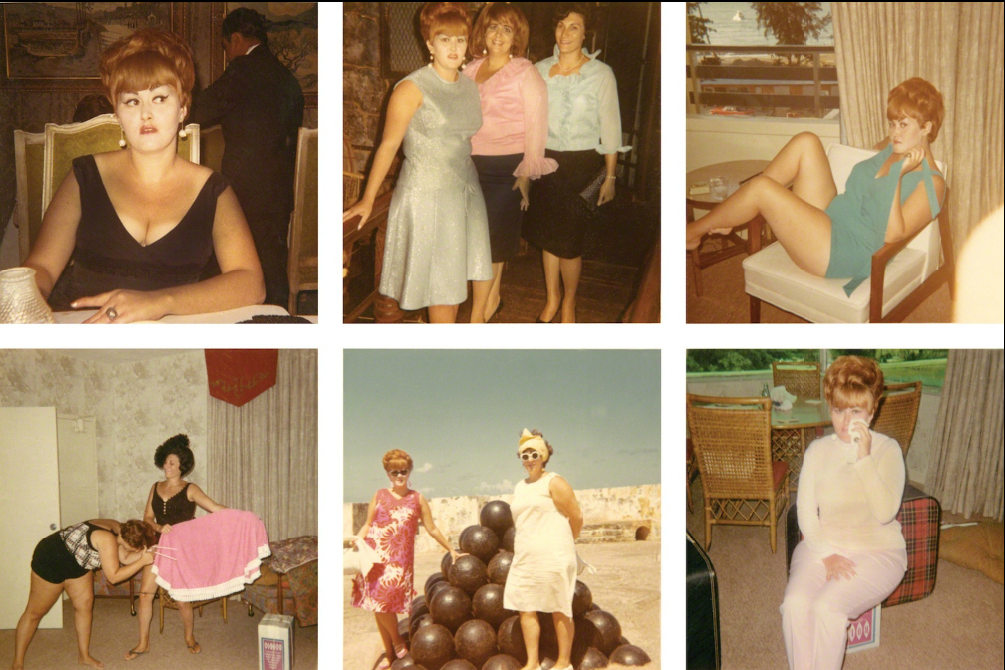Celebrate the Art of Scrapbooking With This New York Exhibition
The show at the Walther Collection Project Space features more than 20 volumes filled with quotidian images, scribbled notes and miscellaneous ephemera
A scrapbook captures the candid, everyday intimacy of its subjects in a way that the stiff, formal atmosphere of studio portraiture struggles to replicate. Yet this “vernacular” art form has long been dismissed in favor of professional photography. Still, in recent years, an emerging critical reappraisal of vernacular photography has finally started to frame the work in a more nuanced light—and now, an ongoing exhibition at the Walther Collection Project Space in New York is further contributing to that dialogue.
As Scott Reyburn reports for The New York Times, Scrapbook Love Story: Memory and the Vernacular Photo Album features more than 20 volumes filled with quotidian images, scribbled notes and miscellaneous ephemera from amateur photo albums and scrapbooks dating from the 1890s to the 1970s. All are drawn from gallery owner Artur Walther’s collection of more than 20,000 vernacular snapshots.
The Walther Collection has long been invested in the renaissance of vernacular photographs, and it even co-sponsored a symposium on the subject last fall. For the new show, items on display were all selected to reflect the “visual and material equivalent of oral histories," a press release details. They range from a World War II scrapbook created by serviceman Richard Hicks Bowman, who dotted its pages with a colorful mix of used postage stamps, text-heavy newspaper clippings and photographs, to a 1970s volume dominated by a red-haired woman whose calculated sidelong glance in a chic dinner portrait gives way to a shot of her blotting away tears.
Other highlights include an album compiled by alumni of the Ohio State School for the Blind over the course of several class reunions, a 1905 “Girlfriends’ Album” featuring photos of the three women playfully posing in their petticoats and long skirts, a 1945 collection of “Sailors and Hula Girls Portraits,” and an impressive two-page spread of photobooth portraits dating to the 1930s.
The draw of these scrapbooks, exhibition co-curator Mia Fineman of the Metropolitan Museum of Art says, is their singular charisma. “There’s a special charm to these objects in terms of what they do and how they have been used,” she tells the Times’ Reyburn. “They speak directly to the viewer.”

The ubiquity of the scrapbook in the early- to mid-20th century afforded its creators a certain level of freedom and authenticity, designer Jessica Helfand, who authored a book on the American art of scrapbooking, explained in a 2009 interview with Smithsonian.com’s Megan Gambino.
“They just made things, and they were messy, incomplete and inconsistent,” she points out. That’s what makes picking up an album—regardless of whether it once belonged to a famed scrapbooker such as Virginia Woolf, F. Scott Fitzgerald and Mark Twain or an individual lost to history—such an emotionally charged experience.
There’s something compellingly voyeuristic about leafing through such intensely personal records of otherwise overlooked lives, like the scrapbook of one Virginia Becker, who tells her 1940s love story through an assemblage of smiling couple shots, Christmas cards and miscellaneous souvenirs. There’s also so much history to glimpse at through the pages—for example, take the images featured in the so-called “Forgotten Man Album.” Created circa 1935 by an unidentified photographer, the volume documents African-American life through images and pasted cut-out newspaper captions that provoke additional questions rather than elucidate the subject matter at hand. Just look to the caption positioned below a serious-faced individual—“What Price Glory”—or the ominous statement below a slightly smiling woman: "It had to happen."
As is often the case when excavating little-known histories, the stories behind these snapshots remain tantalizingly just out of reach. But as the camera testifies, at least the sitters' likenesses live on, inspiring those who look back at them nearly 100 years later.
Scrapbook Love Story: Memory and the Vernacular Photo Album is on view at the Walther Collection in New York City through January 26, 2019.
/https://tf-cmsv2-smithsonianmag-media.s3.amazonaws.com/accounts/headshot/mellon.png)


/https://tf-cmsv2-smithsonianmag-media.s3.amazonaws.com/accounts/headshot/mellon.png)